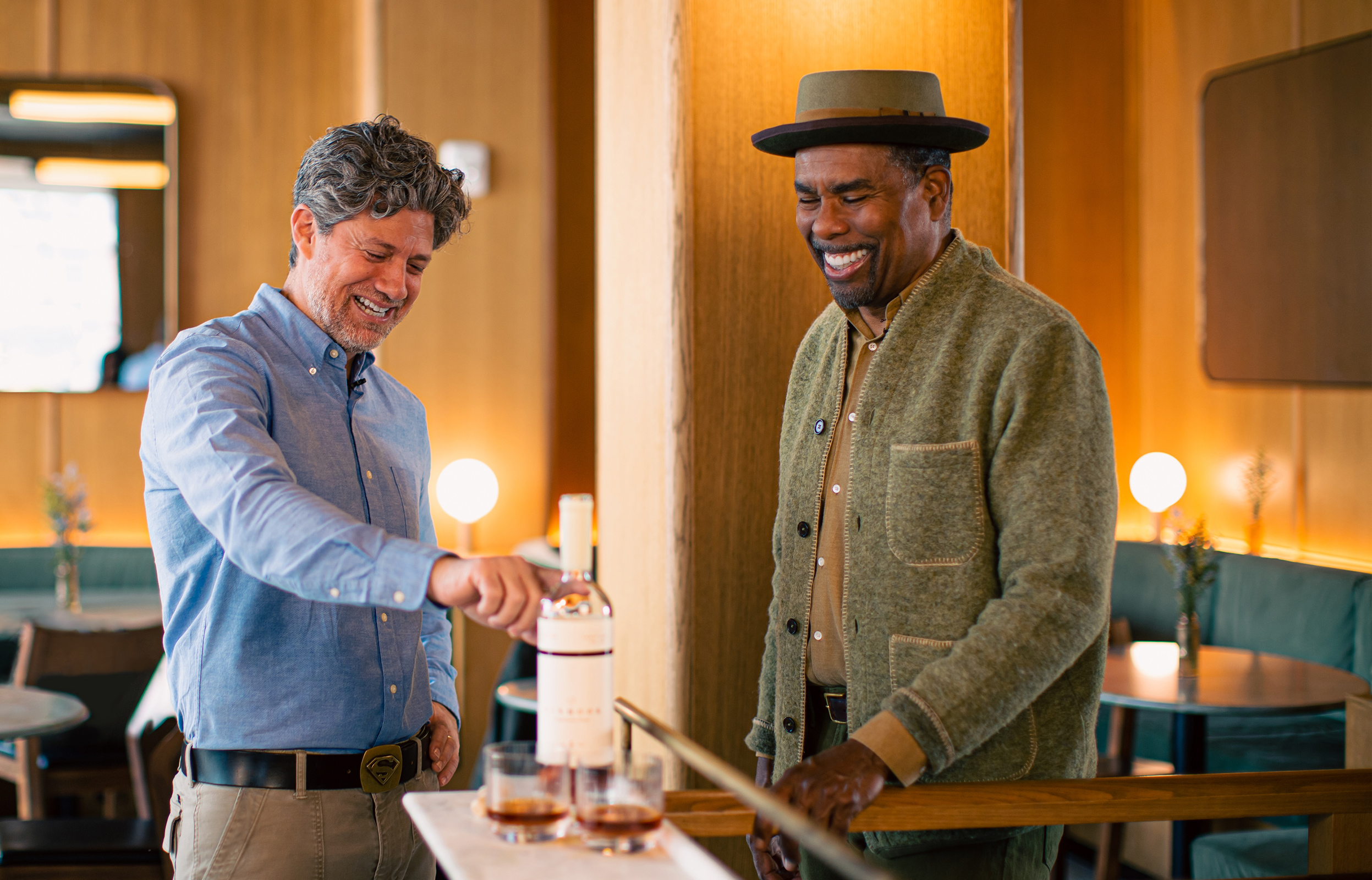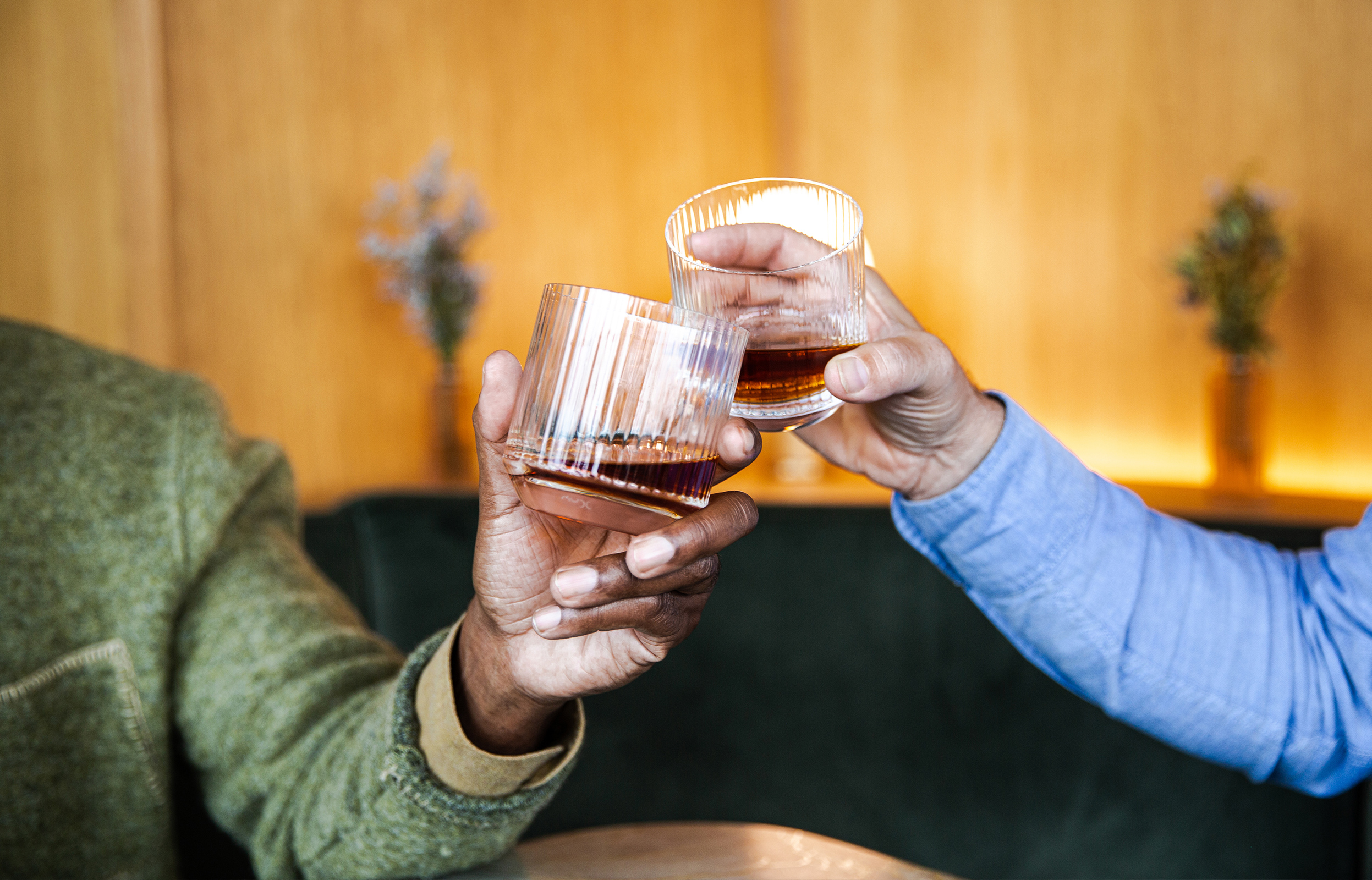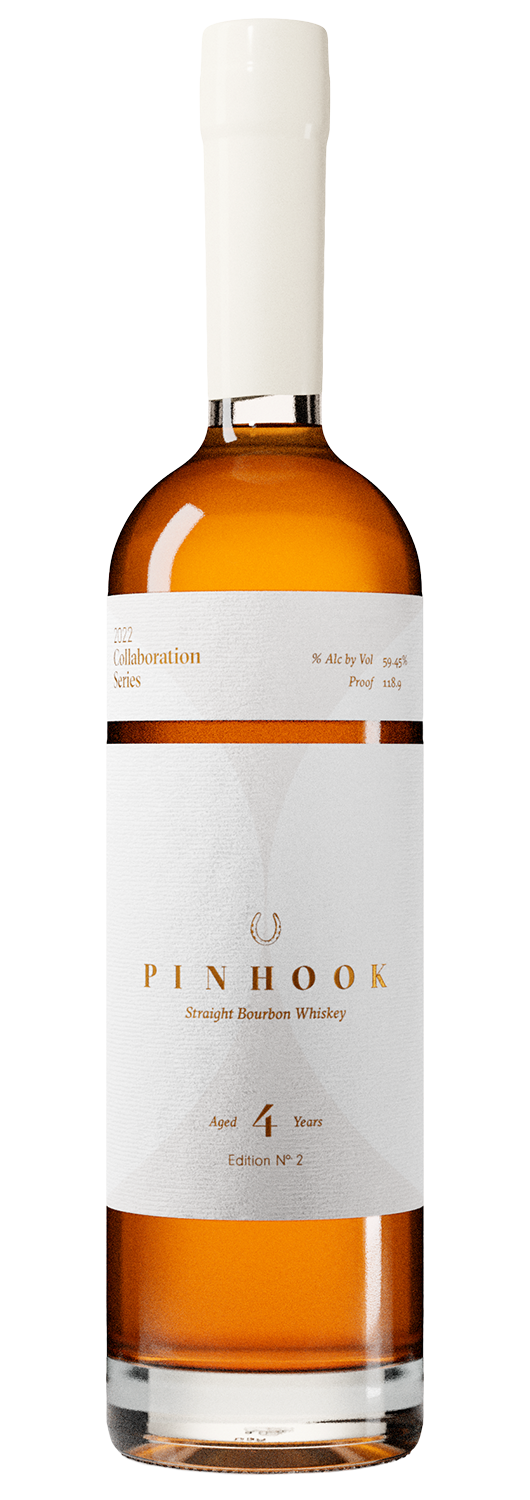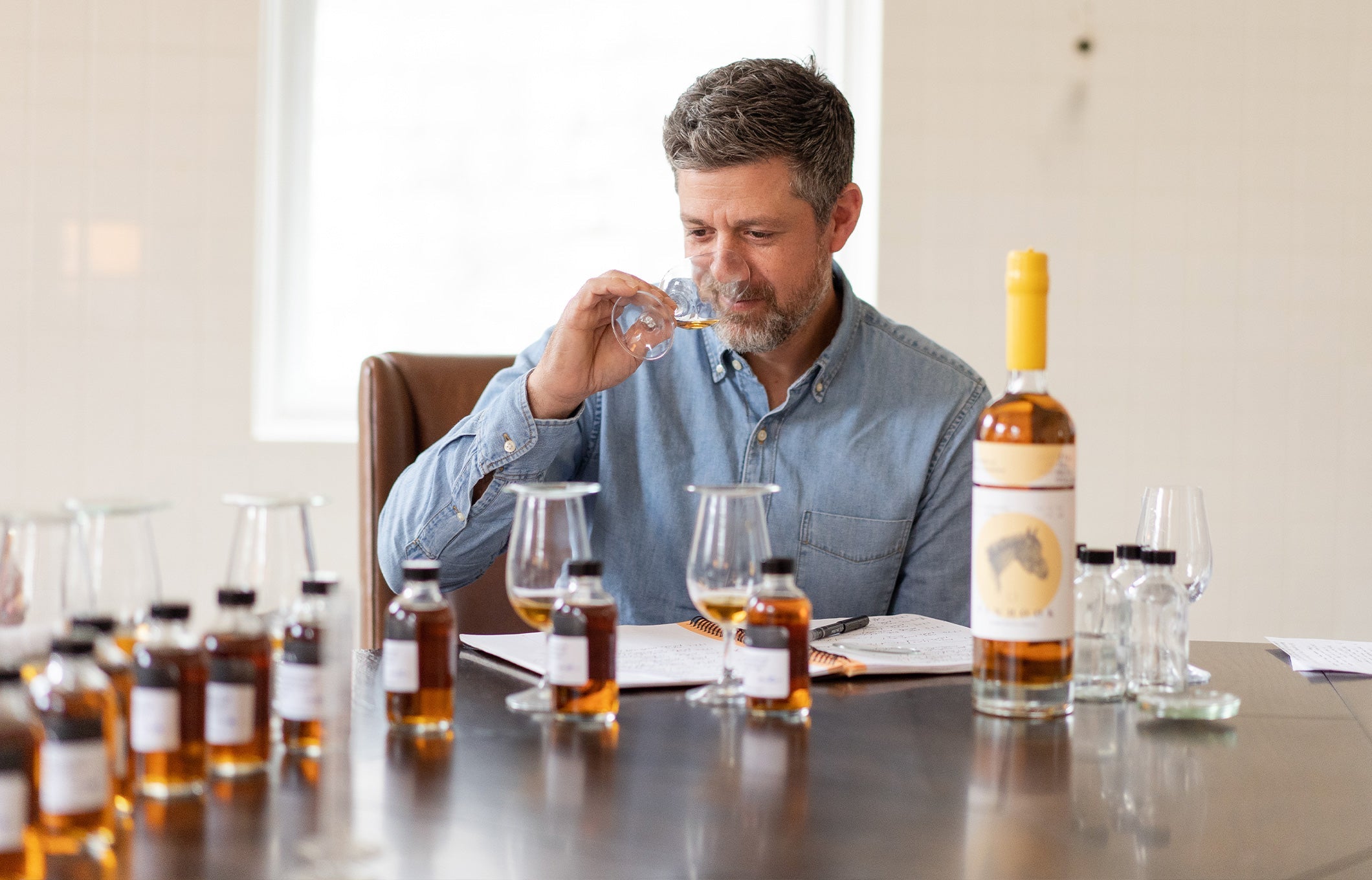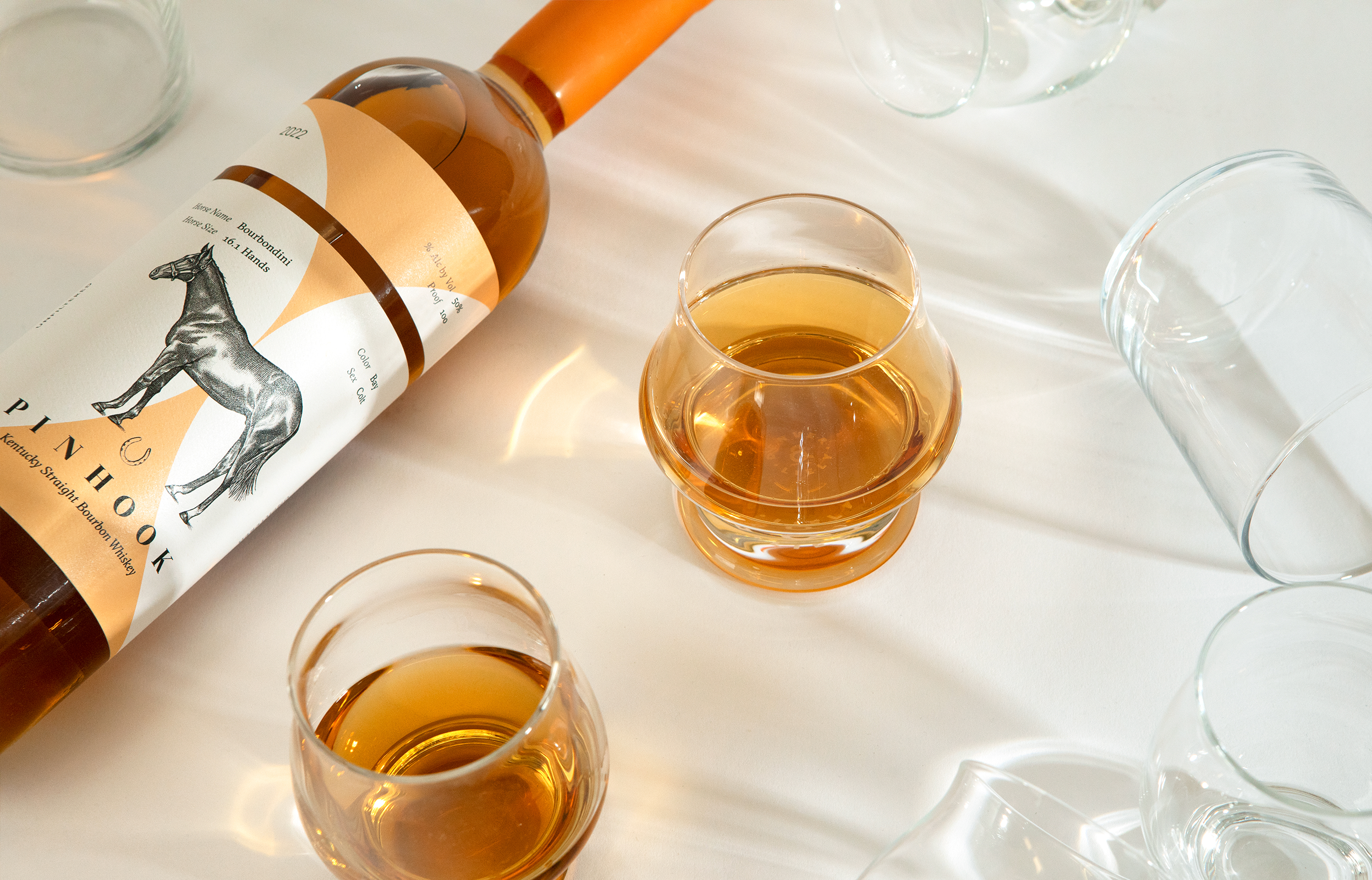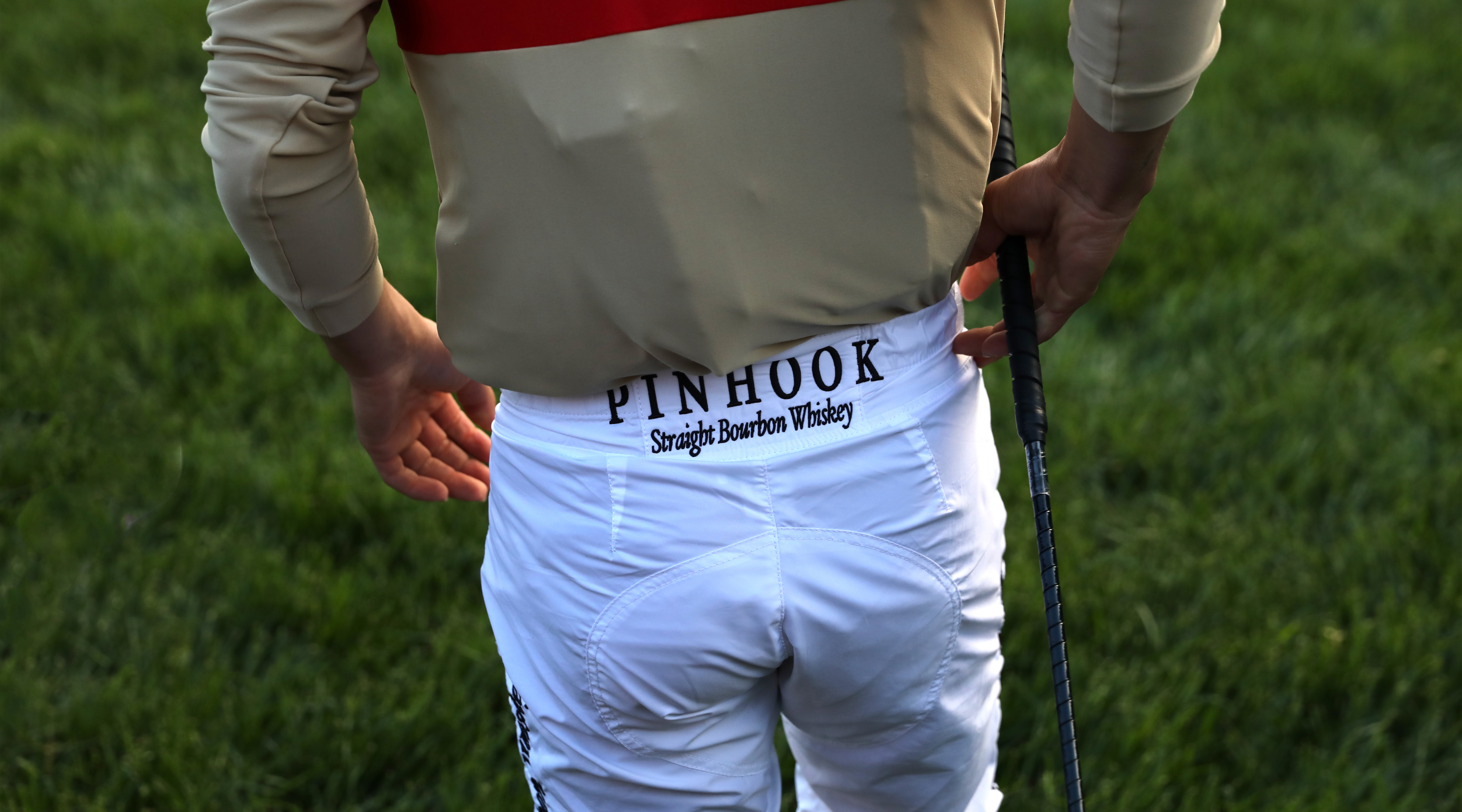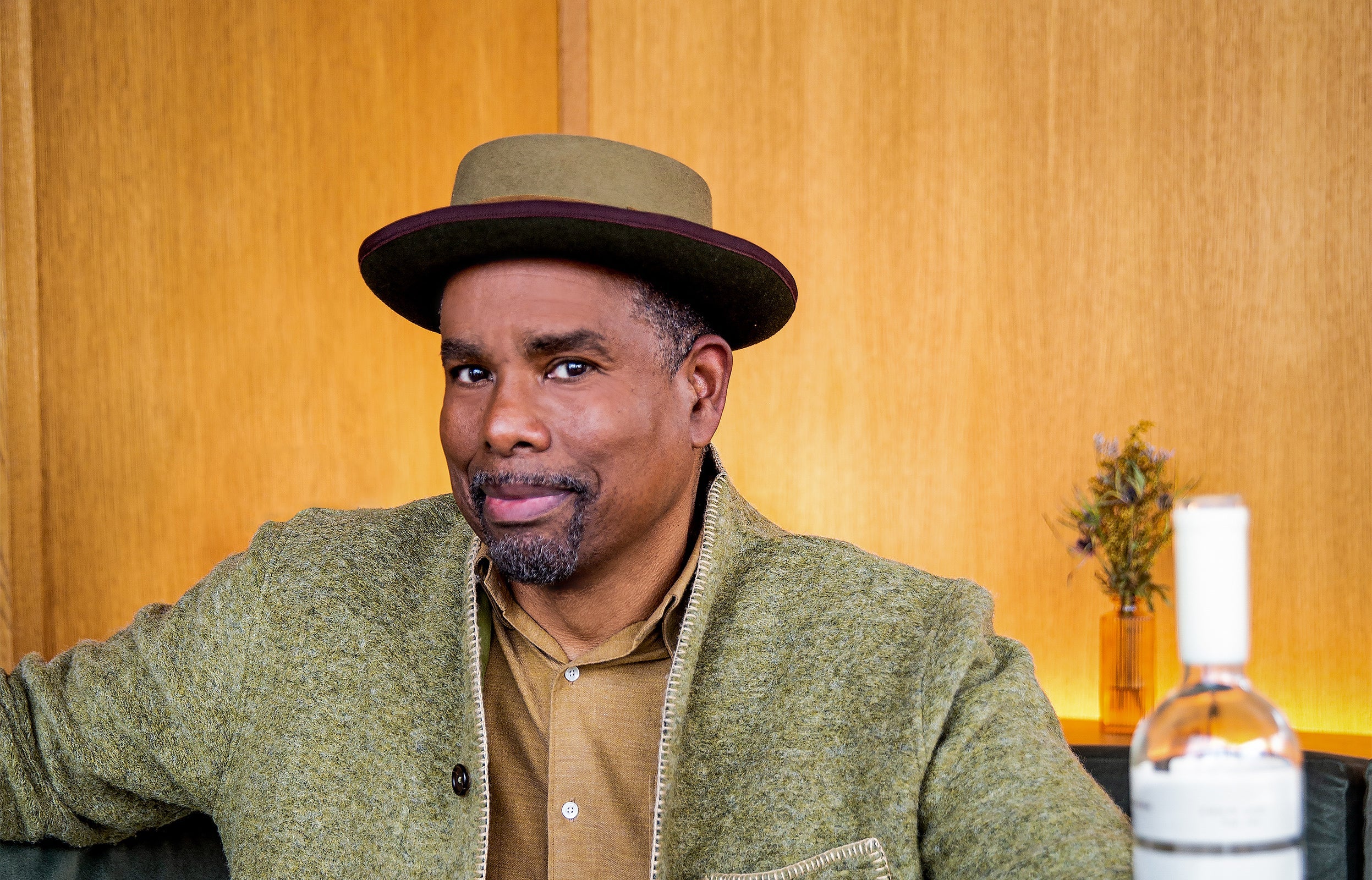
When Pinhook joins forces with a luminary from another field for its Collaboration Series, the decision comes down to one thing: Will this person challenge us to make an even better, more interesting whiskey. In this regard, there was zero hesitation in recruiting Brooklyn Brewery Brewmaster Garrett Oliver for the series’ second release. For our money, there is no finer palate in the world of drinks.
“Garrett was an obvious choice [for the collaboration], given he not only has a tremendous palate, but years of experience blending beer, including beer aged in bourbon barrels,” says Pinhook Master Blender Sean Josephs, who worked with Oliver on the release. “I can’t say that I was surprised that Garrett took to the process so seamlessly.”
We recently joined Oliver for an afternoon at the Brooklyn Brewery to talk about his groundbreaking role in the beer industry, the experience of blending a bourbon, and the foundation that is giving him renewed purpose–proceeds from the Collaboration Edition No. 2 will fund 20 scholarships in brewing and distilling for people of color through the Michael James Jackson Foundation, of which Oliver is chair.
A Pioneering Palate
The palate and experience that Sean speaks of were honed over Garrett'’s three decades in the position at Brooklyn Brewery–an almost unheard-of streak of longevity in a category that barely existed when he got started. In fact, before anyone had so much as thought to start calling it craft beer, Garrett Oliver was perfecting the stuff with a home-brewing kit in the 1980s, after a post-college year spent living in London and traveling the Continent introduced him to a world beyond the thin American beers he’d known before.
“When I got [to London], they offered me their version of beer, which at first appeared to me to be a very strange amber color, and it was warm, and it was flat,” Oliver says, “But it was one of the most fascinating things I’d ever had.” Unbeknownst to him at the time, he had arrived at a pivotal moment in his life. He’d soon become a pioneering force in the brewing industry.
As it happens, Oliver was also a pioneer of collaborations in the beer world. “Brewery collaborations were invented, apparently, by me,” he says. He had no idea until a group of British journalists did the research and let him know. A bourbon collaboration felt like a natural extension of the curiosity that led to his beer collaborations.
It’s the same curiosity and talent that made him known throughout the drinks industry and beyond as a tastemaker (literally and figuratively) and connoisseur of all things boozy. “This whole world of flavor throughout all these drinks is interesting to me,” Garrett says.
It’s something Sean noticed immediately when they got to know each other at his old Brooklyn restaurant, Char No. 4–Sean as owner, Garrett as customer. “In addition to his beer bona fides, he was also a wine connoisseur, a cocktail aficionado, and an incredibly accomplished home cook,” Sean says.
A Perfect Blending
Going into the Pinhook collaboration, Oliver knew what he liked in a bourbon: “It has to have structure, it has to have balance, and it has to be elegant. But it can’t be boring.” With that in mind, he hoped to land on a bourbon with an element of surprise. “My mindset is like, okay, what is going to make this stand out, what’s going to be different about it than you would get from all these other bourbons out there? It was fascinating to put it together.”
When he’s making beer, he has a clear approach: “What does it do–When you smell it, what do you smell. When you taste it, is the bitterness right at the front of your mouth? Does it take a second? And then also, what can you do with it, what is its purpose? Is it a lubricator for your evening, is it meant to go with food?”
Later, when we asked him about his strategy going into the Pinhook Collaboration, Garrett's answer remained consistent: “I had to decide…what did I want this bourbon to be able to do. What’s its purpose? Is it a sipping bourbon? Is it also supposed to be good for mixing?”
When they were blending the bourbon, Sean and Garrett came across one block that immediately seemed like a no-go. “It had high, volatile acidity. I was like, Okay, that’s a weirdo, left it out,” says Garrett. This was in line with the biggest surprise he encountered in blending a bourbon–”a bigger range of personalities in the individual barrels than I expected.”
As the blending progressed and they were getting close to the final version, though, they started thinking about that “weirdo” block again. “It ended up coming back in at the end where …it’s like something’s missing, okay we’re almost there, and then I go grab this thing which had the lowest score of any of the ones that I had. I’m like, this is the little bit of spice that it needs to give it a little lift at the end. And that’s where we hit it, and we all kind of looked up and said, there it is. I was like, Wow, that was really cool.” It’s an experience he expects to take with him back to his work at Brooklyn Brewery.
For the record, he thinks Collaboration Edition No. 2 a sipping bourbon that also makes a mean old fashioned.
Paying It Forward
Before it happened, Oliver never intended to make beer professionally. In the beginning, he was making beer at home so he could have the kind of beer he loved. “But as I started to do it as a hobby,” he says, “I fell in love with actually making it, as well.”
Around this time, Oliver discovered the books of legendary beer and whiskey writer Michael James Jackson. Through Jackson’s writing, he came to understand the wider world of beer, and to grow captivated by it. Jackson would become a mentor and friend to Oliver, and inform his approach when he began his brewing career, first in 1989 as assistant brewmaster at the Manhattan Brewing Company, which when it opened in 1984 was the only beer-brewing operation in the city, and then in 1994, when he took over at the young Brooklyn Brewery.
Garrett credits Jackson with making his career possible as an African-American working in an industry that was overwhelmingly white. “Michael basically provided my entrée into spaces where people were not prepared for me to be and they were not prepared to see me.” He remembers in particular, the first time he judged the Great British Beer Festival.
“Michael was so powerful as both a personality and whatever else that he simply wouldn’t take no for an answer, and so he would push me into the room and then I would have to prove myself. But he got me into the room.”
Recently, when Oliver found himself now wanting to give back, it seemed natural to honor Jackson. The Michael James Jackson Foundation grew out of a scholarship once administered by the American Institute of Food and Wine. One of Brooklyn Brewery’s founders, Tom Potter, came to Garrett with the idea of resurrecting it. He agreed, only this time he wanted to do something that could move the needle toward making his industry more inclusive. The pandemic gave them the time and space they needed to make it happen, and since its inauguration in 2021, the MJF has awarded 29 scholarships to people of color in the United States, with more on the way.
Oliver points to the cost of certifications in brewing–anywhere from $4,000 to $23,000–as prohibitive to many people who have the will and the talent, but not necessarily the means to take that final step on the path to brewmaster or assistant brewmaster. “What the MJF does is we give you the fuel,” sys Oliver. “You’re going to have a career and you’re going to be able to sit in the same chair [as me], and you’re going to be able to hire other people. And that’s how things change.”
Garrett Oliver hopes the Collaboration with PInhook will not only raise scholarship funds, but also bring greater awareness to the foundation and honor the legacy of Michael James Jackson.
“I want people to remember, he was a distinctly anti-racist person. And what I mean by anti-racist is not just that he wasn’t racist…he actually did something about it.”


